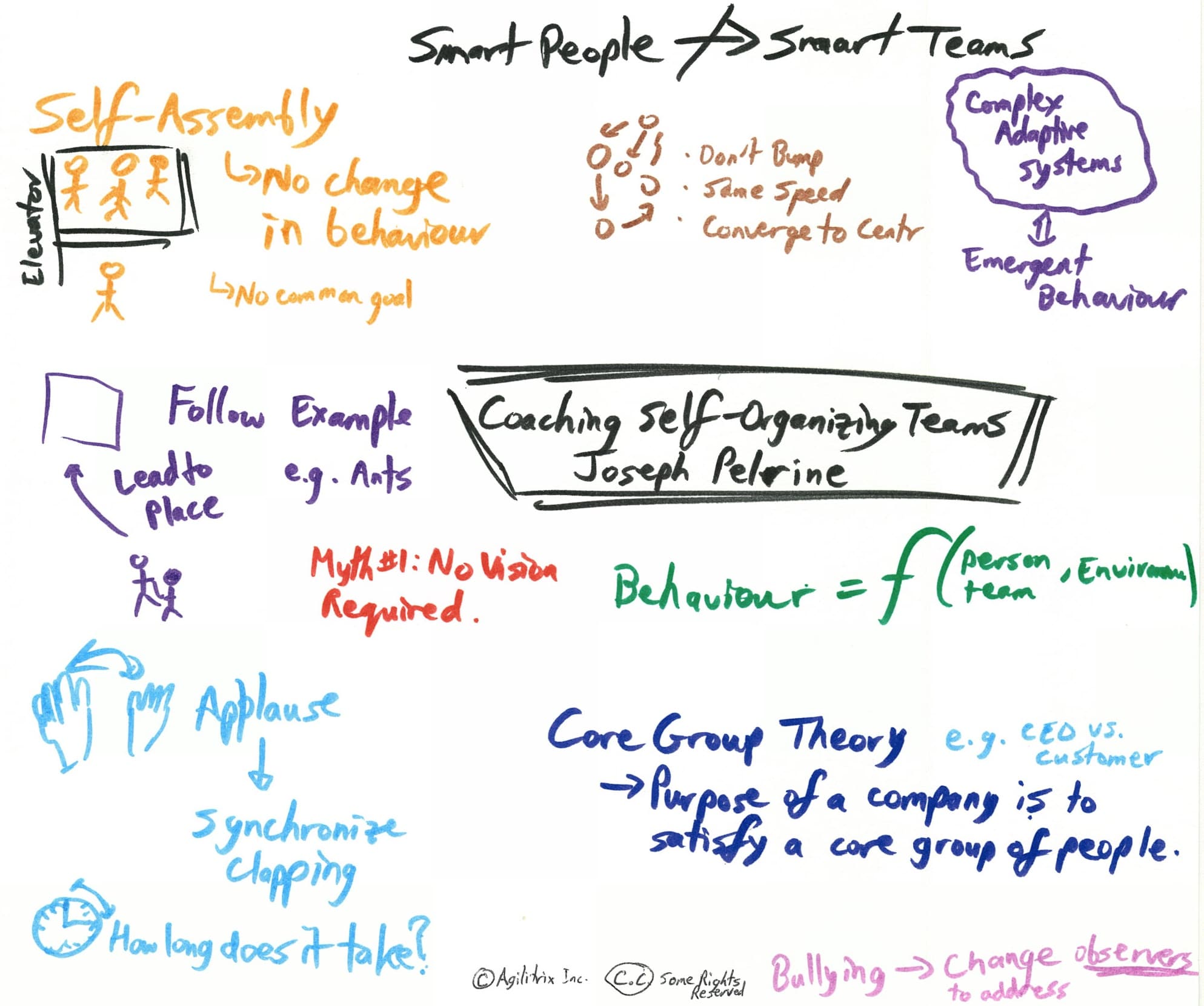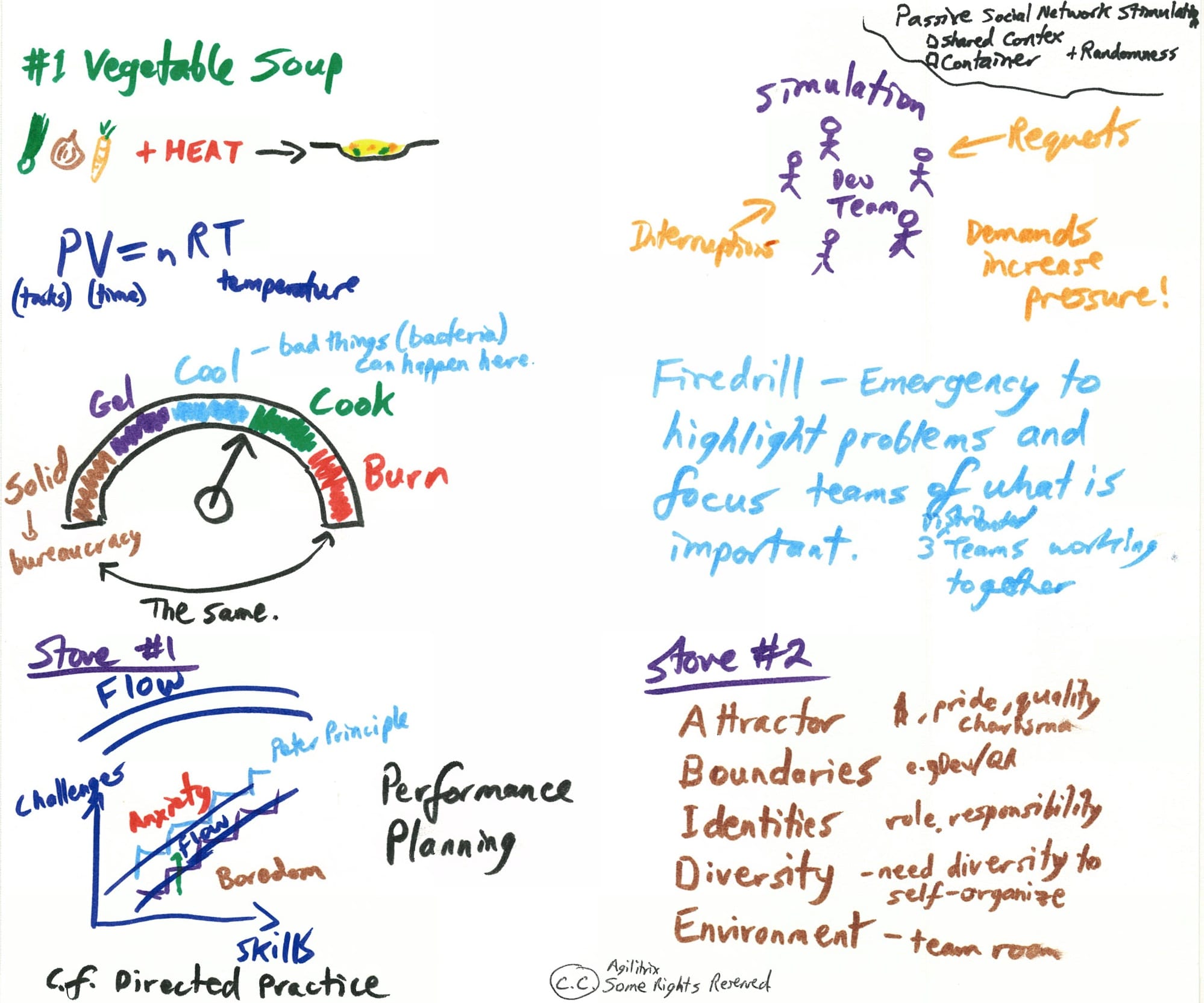Joseph Pelrine gave a really interesting session on “Coaching Self-Organizing Teams” at Agile 2009. (Mark Levison wrote about the pre-cursor to this session last year.)
There were a number demonstrations:
- The first was of self-assembly (orange) and illustrated through people getting into an elevator. They have no common goal and there is no change in behaviour.
- Another was of people who were given the simple instructions (brown) of don’t bump, stay at the same speed and converge to the centre. This demonstrated the idea of the team as a complex adaptive system where simple rules can lead to emergent behaviour.
- Another was to ask people to clap there hands and then see how long it takes before everyone synchronizes.
He then went on to share some interesting ideas such as Core Group Theory – where the purpose of a company is to satisfy a core group of people. To influence and organization, you need to know who they are.

Then things got really interesting. Joseph likened self-organizing teams like making vegetable soup – the trick is to get the temperature right.
Checkout the heat gauge below. As you can see there is a green zone where things are really cooking. But beware the danger of too much heat (burning) and the cooling down phase where bad things can happen. Gelled state is stable but there is not much innovation. It is stable, but heat is needed to get cooking again.
What are the ways we can apply heat?
Stove #1 is about performance planning for individuals where challenge needs to be balanced against skill. For a given skill level there is a range of challenge that can lead to a state of flow. With this model, there are two ways to climb in proficiency:
- People can surf the top line and take on challenges beyond our capability. Think of a snowboarder pushing boundaries of what they can do.
- People can follow the bottom line and develop skills before taking on new challenges. This reminds me very much of Deliberate Practice – a key to Craftsmanship.

The next simulation was to have a group of people sit in a circle and pretend they are a development team. The people on the outside interrupted them to ask questions. Even when the team resisted, they felt pressured.
Stove #2 is to use the ABIDE model by David Snowden. (The pre-requisite is the have a context and a container.) We need to think about how to stimulate the social network. Here are some hooks:
- Attractor – Pride, money, quality, charisma
- Boundaries – Team boundaries e.g. traditional Dev/QA
- Identities – Role, responsibility
- Diversity – Gender, age, skills, personality
- Environment – Team room, desks, computers
We can make changes to any of these to get a shift in team dynamics.
Like this? Joseph has some online talks on InfoQ:
- Coaching Self-Organizing Teams speaks to self-organization and the cooking metaphor.
- Dealing With the Organizational Challenges of Agile Adoption is about models for understanding conflict when adopting Agile.


